What’s happening: The Ozarks and its people are represented during this summer’s 2023 Smithsonian Folklife Festival in Washington, D.C. in a program titled “The Ozarks: Faces and Facets of a Region”
Why we care: The festival provides an opportunity to present the multi-faceted, culturally diverse community that makes up the Ozarks to an international audience. Not only will that provide a more accurate picture of our region’s rich heritage compared to fictional media’s sometimes exaggerated portrayals, but it could lead to an increase in tourism.
Festival Details: “The Ozarks: Faces and Facets of a Region” starts June 29 and ends July 9 on the National Mall in Washington, D.C.
Defining the Ozarks: Dr. Brooks Blevins talks about what it means to live in the Ozarks, plus we asked some participants how they define the Ozarks.
Fictional Ozarks versus Reality: Organizers and festival participants share a few thoughts.
From the Springfield plains to the hills and hollers of the Ozark mountains, just where do the Ozarks begin and end? And how do you define an Ozarker?
Ask an outsider and they will likely describe a one-dimensional hillbilly if their only exposure has been through unflattering portrayals in fictional media, or while vacationing in Branson where the hillbilly image has been exaggerated for the sake of tourism.
Certainly the physical Ozarks — characterized by karsts and caves, hills and hollers, streams and springs that created isolation and seclusion — influenced the culture of early white Scots-Irish and German pioneers from the Appalachians. But today, in addition to decedents of those early pioneers, enslaved Africans and Native Americans, there’s a growing influx of Hispanic and Marshallese populations, and a variety of new residents from all over the United States and other nations who moved to the Ozarks for careers, retirement, the low cost of living and outdoor recreation.

Our region today is a rich, multi-layered blend of old, cherished traditions infused with new ones, many of which will be represented through the 2023 Smithsonian Folklife Festival in Washington, D.C. — a once-in-a-lifetime opportunity made possible by many dedicated people and two years of planning.
“The Ozarks: Faces and Facets of a Region” will be a featured program of the free festival June 29-July 4 and July 6-9, facilitated by the Smithsonian Center for Folklife and Cultural Heritage in partnership with Missouri State University. An annual event for 50 years, the Folklife Festival is an international exposition of a selected living cultural heritage held for two weeks each summer on the National Mall. A second program at this year’s festival, “Creative Encounters: Living Religions in the U.S.,” will share space with the Ozarks expo.
How to experience the Smithsonian Folklife Festival (click to expand story)
If you can make it to Washington, D.C., the Smithsonian Folklife Festival will be open 11 a.m.-5:30 p.m., with concerts starting at 6 p.m., June 29-July 4 and July 6-9.
If you can’t, it’s worth exploring the Festival website, Facebook page and YouTube channel for a rich array of online materials. The schedule for the festival is available online, as is the festival map, and you can also check out the Virtual Visitor Center.
And if you’ll miss the Ozarks Mountain Daredevils concert in D.C. on July Fourth, catch them for Drury University’s 150th anniversary celebration on Sept. 16.
Cultural Folklife
In an online program introduction, historian and MSU professor Dr. Brooks Blevins describes the Ozarks as “an American region with no single story to tell, a place more complex than you imagined but maybe just as colorful as you hoped.” The author of a trilogy of books about the Ozarks also wrote an informative blog about the region for the festival website.
“Complex” is an accurate description of the Ozarks and that will be reflected throughout the festival, said Tom Peters, Dean of Library Services at MSU. Peters and Cristina Diaz-Carrera at the Smithsonian Center for Folklife and Cultural Heritage are lead curators for the Ozarks program in collaboration with area advisors, sponsors and coordinators.

While the festival features expected folklife traditions handed down from the Appalachian settlers, visitors may be surprised to experience unexpected facets of our community, Peters said. That will include Marshall Island boat-building and weaving, Native American music and dance, Black gospel music, tapestry art representing the LGBTQ experience, mural art representing the Latino experience, food presentations that blend old and new traditions, demonstrations to represent the surge of interest in outdoor recreation and many other aspects expressed through the arts of our broader Ozarks community.
“I think for people who are maybe more of the stereotypical generational white Ozarker — and I'll put myself in that category — you think of things like the quilting, and like the log cabins. And those things are 100% Ozarks too,” said seventh-generation Ozarker Kaitlyn McConnell, a member of Peters’ team who is known for Ozarks Alive, the preservation site she founded in 2015. “But I think there will be, hopefully, good surprises for people coming there, seeing the richness of the different ethnic traditions that have also long been part of the Ozarks.”
Reality versus Fiction: The Ozarks in Pop Culture
Check out this article to see what local historians think about the portrayal of Ozarkers in popular media.
Nearly three years ago, the Smithsonian approached Missouri State University to act as the primary partner and after due diligence, Peters says, the university agreed. Since then, dozens of people in Springfield and at the Smithsonian have researched and organized the roughly $2 million Ozarks celebration, funded federally and through regional sponsorships. It was a natural fit since the university offers an Ozarks Studies program and has preserved Ozarks history and music for decades.
The festival focuses on the cultural Ozarks, since by its broadest definition, the geographic Ozarks encompasses regions in five states: Southwest Missouri and Northwest Arkansas, portions of eastern Oklahoma and, surprising to some, a bit of Kansas and Illinois. Since it’s not possible to represent everything about the Ozarks in a two-week national festival, Peters and his core team, in coordination with the Smithsonian, developed four key themes:
- Celebrations and Gatherings
- Stories, Sounds and Show Business
- Migrations, Movements and Pathways
- Connections to Land and Place
The themes aren’t comprehensive and can’t cover every facet and face of our region, Peters stressed.
“We know we can’t portray all views,” he said. “There’s just no way we can portray the breadth of folklife in the Ozarks.”
Organizers and participants reflect on what the festival means to the Ozarks (click to expand story)
Diaz-Carrera says up to 100 planners and presenters from different cultures and communities will participate in the Folklife Festival, expected to draw at least 400,000 visitors from around Washington, D.C., including domestic and international tourists. For 10 days, the National Mall will spring to life with a taste of the Ozarks showcasing those themes through demonstrations, exhibits, presentations and performances by area musicians, singers, dancers, quilters, painters, storytellers, textile and craft artists including a blacksmith, foraging and food experts, boat and trail builders and more. The festival focuses on preserving living traditions, old or new, and to cultivate a better understanding of a region’s cultural differences.
Not only does our region have a rich hill country history, but living traditions are also evolving as the face of the Ozarks becomes more culturally diverse with the influx of other cultures and people from other regions and states. Participant Rachael West moved from California to the Ozarks 15 years ago and looks more like a hippie than a traditional folklife Ozarker, she said.
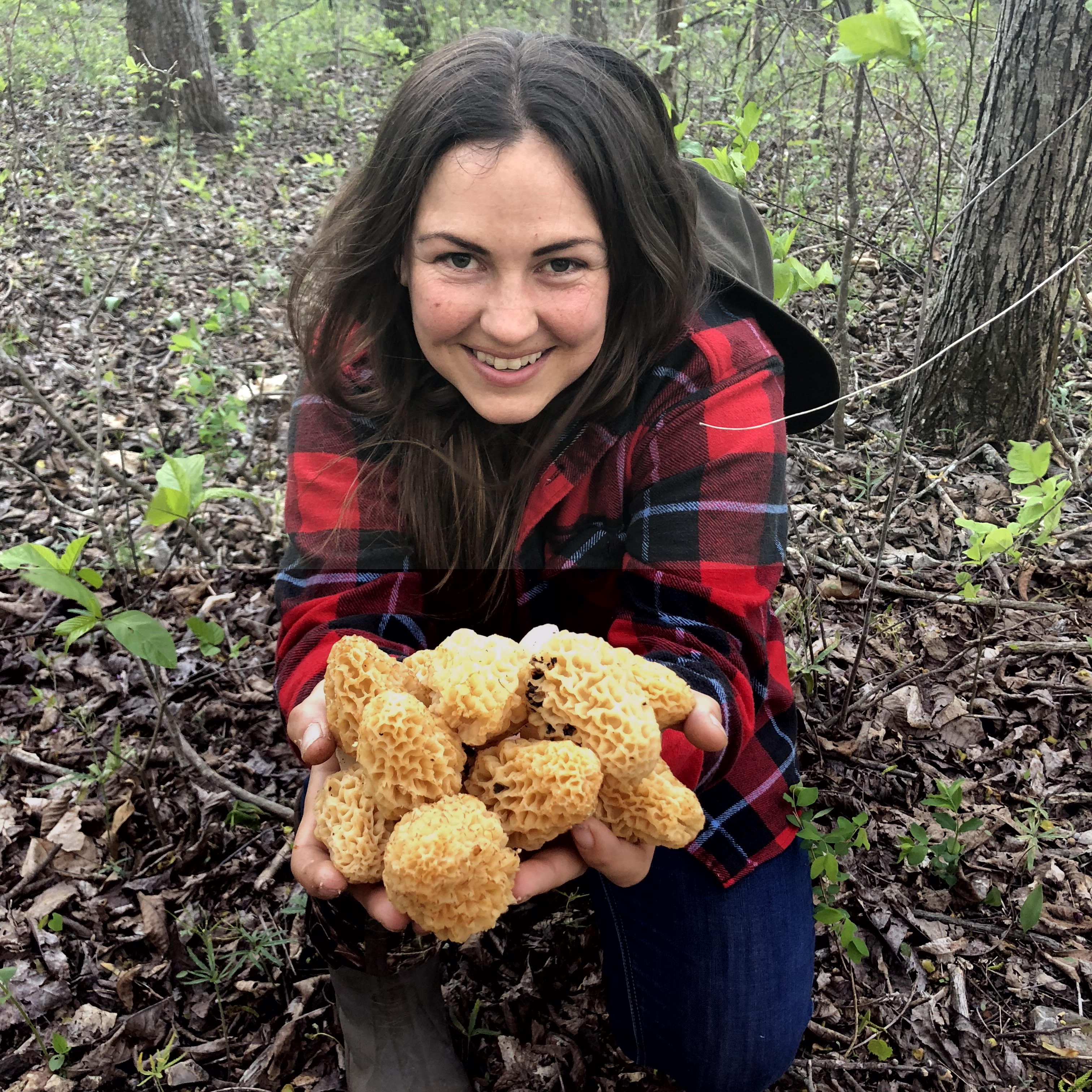
West incorporates pioneer traditions of gathering food in her work. A forager, certified herbalist and culinary chef, West teaches sell-out classes through her business, Eating the Ozarks, about cooking with food found growing naturally. She hopes visitors at the festival will leave with a broader view of the people who inhabit our region today.
“I'm really hoping that they'll see us as more of a melting pot than just a pot full of hillbillies,” she said.
Still, many of those hillbilly traditions are kept alive by younger generations who embrace them. David Scrivner, a Springfield area accountant by day and an old-time folk fiddler every chance he gets, said he hopes to show festival visitors, “how tradition can carry forward and actually enlighten and inform modern day without just being archaic and dead and meaningless.”
Many musicians Scrivner plays with are educated professionals like himself and he hopes festival-goers learn that Ozarks traditions are more complex than Hollywood portrayals suggest.
“It’s always a temptation to reject what came before as old and outdated. And whatever is new and scientific and technologically advanced is automatically better,” Scrivner said. “And I hope that we can show that even those things can benefit from being rooted in tradition.”
Fiber arts are rooted in tradition, too, and tapestry maker Cory D. Perry’s family has lived in the region for generations. Perry grew up in Fayetteville and remembers going to their grandparents’ land near Alma for family reunions and to pick pecans. Even so, Perry, who teaches and studies at Northwestern University in Chicago while earning a master’s in fine arts and Black studies, does not present their art in a traditional folklife way.
“I know that I am an African-American, and I know that I'm also gay, queer, non-binary,” Perry said. “And so I can only speak to my experiences as that person growing up in the Ozarks — even though it is very much a shared experience among a lot of us and people that look like me. So what I would like to bring is sort of a glimpse of life at the intersection of blackness and queerness. Because I am both and I carry both with me.”
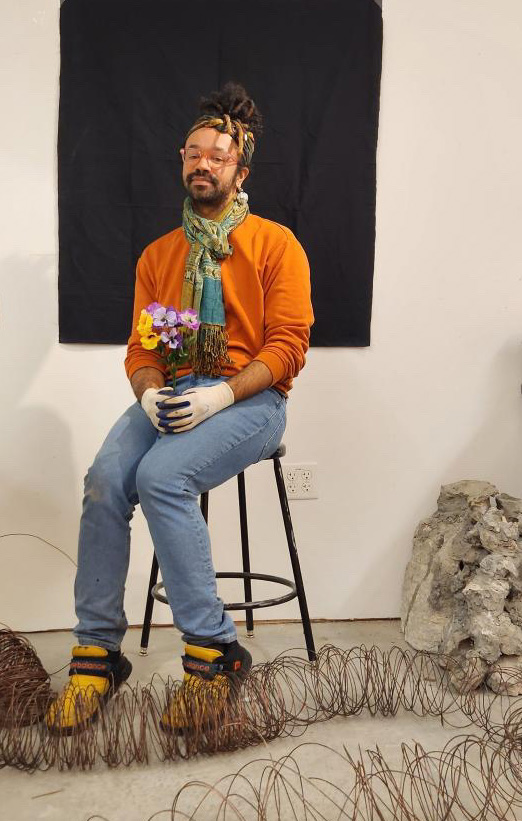
The festival will show the Ozarks as a surprising, amazing place, said Peters who has lived in Springfield for 11 years. The goal is for the public to understand a more complicated idea of what the Ozarks region actually is, and to feel inspired to learn more for themselves. While the hillbilly image persists as a regional characterization, and many folklife traditions reflect the migrant heritage of early pioneers from the Appalachians, he hopes people leave the festival with a broader understanding of the Ozarks as a whole.
“I hope they get a sense of the diversity of the cultural richness of the region,” Peters said.
In addition to makers, musicians and artists, regional experts like Blevins and McConnell will be on hand as presenters to facilitate conversations, answer questions and add context. McConnell says there’s been emerging interest in the Ozarks, although it really goes back more than 100 years to when “The Shepherd of the Hills,” written by Harold Bell Wright, was published in 1907.
She looks forward to engaging with festival visitors.
“I think it's really important that we have this opportunity — especially on this level — to be able to address those questions,” McConnell said. “And maybe to redefine what their opinions and beliefs are about this region, and to understand that when they hear the word ‘hillbilly’ or other words related to the Ozarks, that those represent people who have a long, proud history and a lot of different ways of changing their own lives and the world.”
Not like Artsfest
Founded in 1967, “historically, the festival is the platform for people to be able to present their practices and knowledge and traditions,” Diaz-Carrera said. “When we use the word folklife, and folklore, what we mean by that is we are presenting living cultural traditions that are happening today, and that are based in community.”
In Springfield, we likely imagine a festival to be like our annual Artsfest or Cider Days on Walnut Street, with vendors, arts booths, food, music and more packed tightly along the sides of a defined space.
The Smithsonian Folklife Festival is not like that.
Picture this festival as an extension of a Smithsonian museum exhibit, only live and interactive with informal demonstrations spread out along the grassy tree-shaded park area primarily between 12th and 14th streets on the National Mall. A two-mile open space between the U.S. Capitol and the Washington Monument, the National Mall has been the historic setting for marches, demonstrations and important speeches. It’s home to many of our nation’s most iconic historic monuments, attracting 25 million people a year. It’s also where many Smithsonian museums are found, including its headquarters in the Smithsonian Castle near the festival’s eastern boundary.
A central part of the festival happens on the Rinzler Stage, where the opening ceremony is held June 29, in addition to a 10-day schedule of evening concerts and daytime performances. That includes a Fourth of July concert by the Ozark Mountain Daredevils on a night when the National Mall is expected to attract hundreds of thousands of spectators.
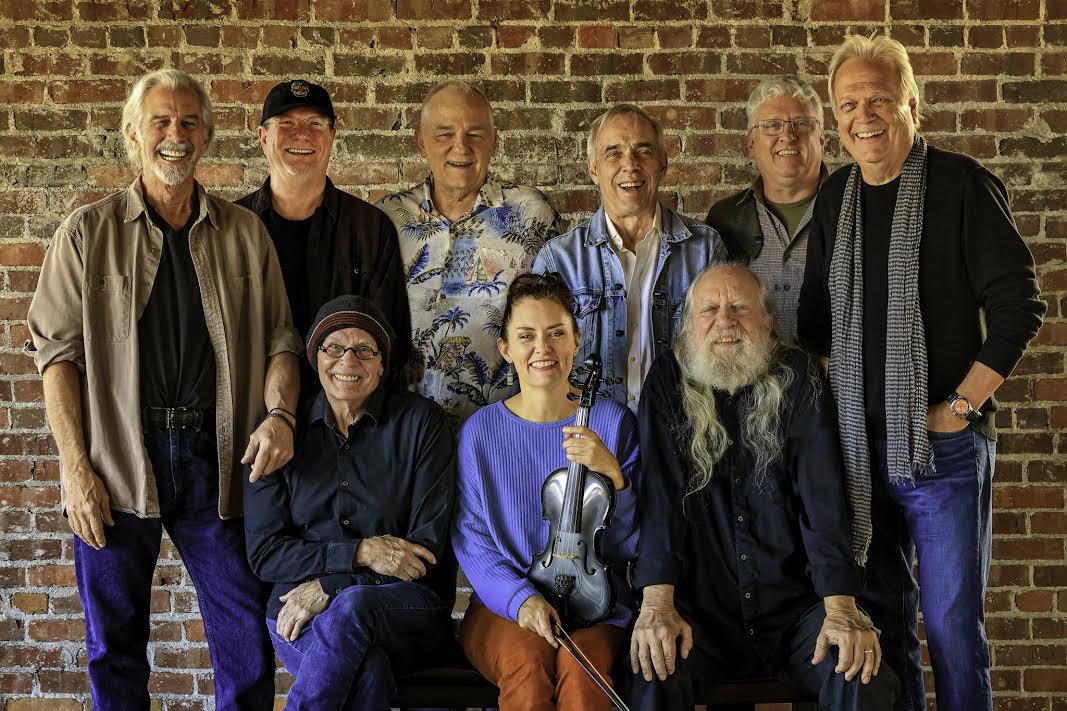
There will also be a large music and dance space, and a discussion stage in addition to smaller demonstration spots including the Front Porch, Festival Foodways, the Pickin’ Parlor and a special build-out this year called the Teaching Garden, filled with Ozarks native trees and plants for herbalism and foraging workshops. The festival provides an opportunity for face-to-face discussions with real people on the ground who are working to preserve their traditions or are part of a community trying to connect with their heritage in some way, Diaz-Carrera said.
Working with partner organizations, it’s always a challenge to find the sweet spot between what is representative and what will be successful in the space, she added: “There are a lot of great stories, but the National Mall is not the best platform for every story.”
(You can see a schedule of demonstrations and performances on the festival’s website.)
Defining the Ozarks
The communities, traditions and cultures that make up the Ozarks are diverse — perhaps more so than some who live here even realize. And the question itself — what is the Ozarks? — means more than one thing, depending on who you ask. Read this story to find out how one expert and a few festival participants describe the Ozarks.
Arlene Reiniger with the Smithsonian Center for Folklife and Cultural Heritage is coordinating the craft artists whose demonstrations represent elements of the four selected themes – often more than one.
Many of the Ozarks demonstrations may surprise people, Reiniger said: “I like to tell people with this program to expect the unexpected.”
Since we can’t all travel to Washington, D.C., we spoke to a few festival participants to learn more about them and what they will present. Read more when you expand each section of the story.
Traditional Ozarks
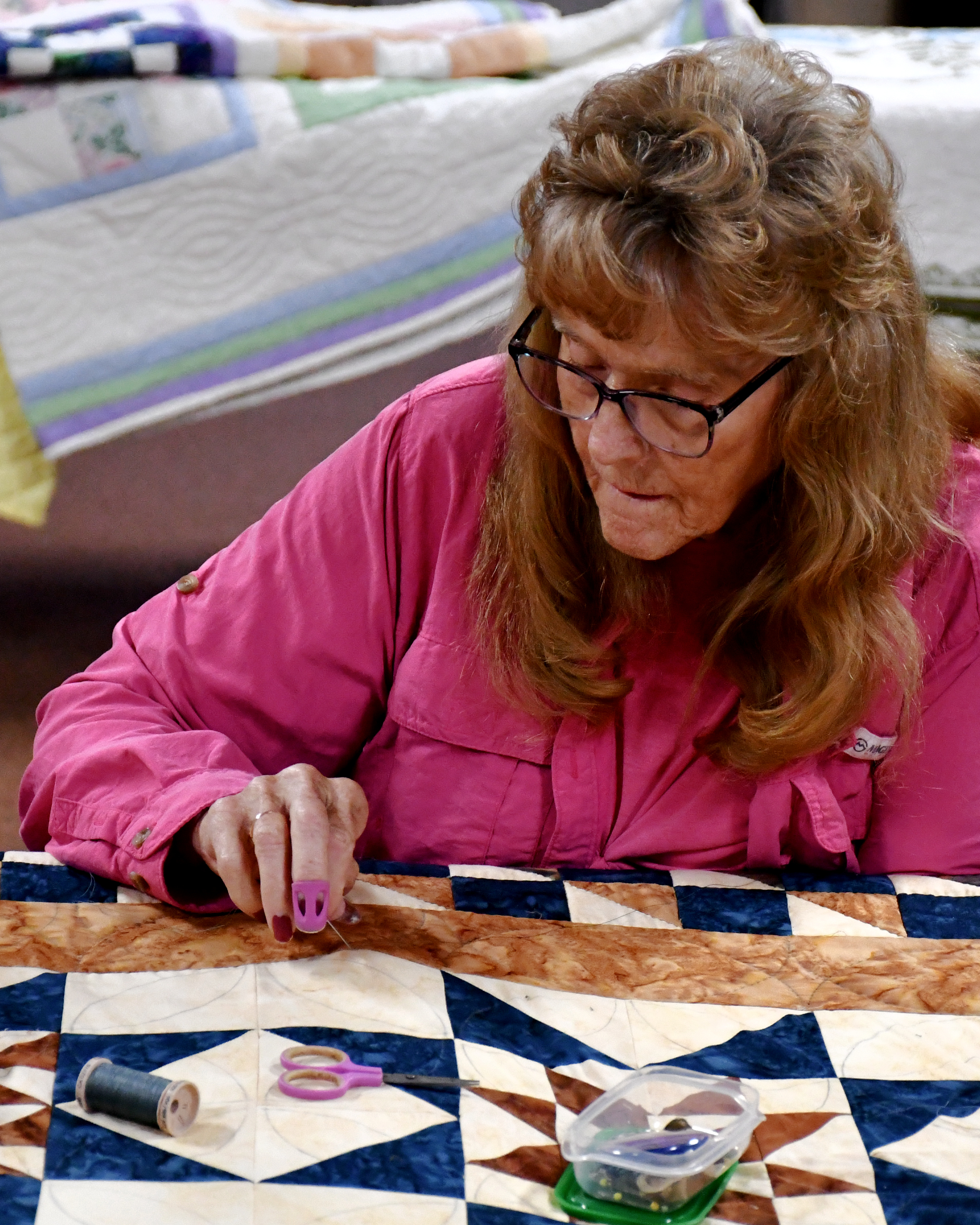
Reiniger described a few of the demonstration areas. They include a 20- by 40-foot tent that will house Cherokee artists from Oklahoma who will demonstrate weaving. Next to them, a 20-foot square tent is devoted to three Missouri quilters including JoEtta Gleason.
Not far away, a blacksmith from Winona, Anthony Martin, will demonstrate gig-making, and foragers and cooks including Rachael West will present new approaches to a traditional activity. These demonstration areas represent a Connection to Land and Place, Celebrations and Gatherings and, in the case of the Cherokee artists, a tie to Migrations, Movements and Pathways.
Read more about these demonstrators (click to expand the story)
Reiniger says the quilt tent will be very active and include hands-on activities for kids. Inside will be JoEtta Gleason and Martha Alsup, who belong to the Arcola Quilting Club near Stockton. Louise Sheridan is a quilter from Doniphan. Gleason, a retired teacher, said she joined the Arcola Quilting Club in 2005, a family tradition.
“My mom and my mother-in-law and my grandmother are all part of this quilting club, and I would go up sometimes in the summer and quilt a little with them so it’s something that always interested me,” Gleason said.
Now quilting is about all she does, Gleason said with a laugh. That’s why being asked to participate in the national festival was like a fairy tale, she said.
“It’s pretty exciting for me, that’s for sure,” she said. “Sometimes people just think we’re hillbillies, which I guess we are, but we do artsy things too.”
That includes craftsmanship merged with practical needs. Anthony Martin, an auto mechanic by day, is a blacksmith artist who looks forward to sharing his craft — and the Ozarks tradition of gigging — on a national level at the Smithsonian Folklife Festival. Martin forges one-of-a-kind gigs in Winona, continuing a family tradition that goes back as far as his maternal great-grandfather. Gigs are pitchfork-like prongs used to spear fish — often bottom-feeders — in streams. For Martin, gigging and fish fries are a longtime family tradition.
An uncle gave Martin his first forge, and a family friend taught him to use it. Then he was accepted into an apprenticeship program with the Missouri Folk Arts Program at the University of Missouri. That connection led to an invitation to demonstrate at the Smithsonian Folklife Festival. Martin will take a little rivet forge that belonged to his great-uncle to demonstrate the gig-making process for five or six hours a day.
Martin feels honored to be included.
“Coming from a small town like this, a person never thinks they will be invited to demonstrate at a place like the nationally renowned Smithsonian Institute,” he said. “When I got that phone call, I’m not gonna lie, I broke down and cried.
He particularly looks forward to talking with people about, not only the Ozarks land and streams, he said, “but the colorful people who are rooted in a long line of tradition and pride.”
Connections to Land and Place is also represented at the Foodways venue and in the Teaching Garden by foragers, cooks and people with food knowledge, including Bo Brown, author of “Foraging the Ozarks,” and West, who will present foraging and cooking workshops.
“I'm even sharing recipes with things that they would have in their yard and their garden, like spicebush, that grows there in Washington,” West said. “So I'm picking things that they will have access to, even if they're not coming to the Ozarks.”
It wouldn’t be an Ozarks Folklife Festival without a little moonshine, too. While the end product can’t be sold or consumed on the National Mall, festival-goers will enjoy distilling demonstrations.
Emerging Cultures
The population of Hispanic people has grown in the Ozarks, and a surprise to many is a community of Marshallese people in and around Springdale, Arkansas. The first Marshallese immigrated to seek an education. Since the 1980s, thousands have arrived, joining families while going to school or getting jobs. Now numbering more than 15,000, it’s the largest group of Marshallese people outside the Marshall Islands. A group of 13 from that community, coordinated by Litha Ralpho, will participate in the festival.
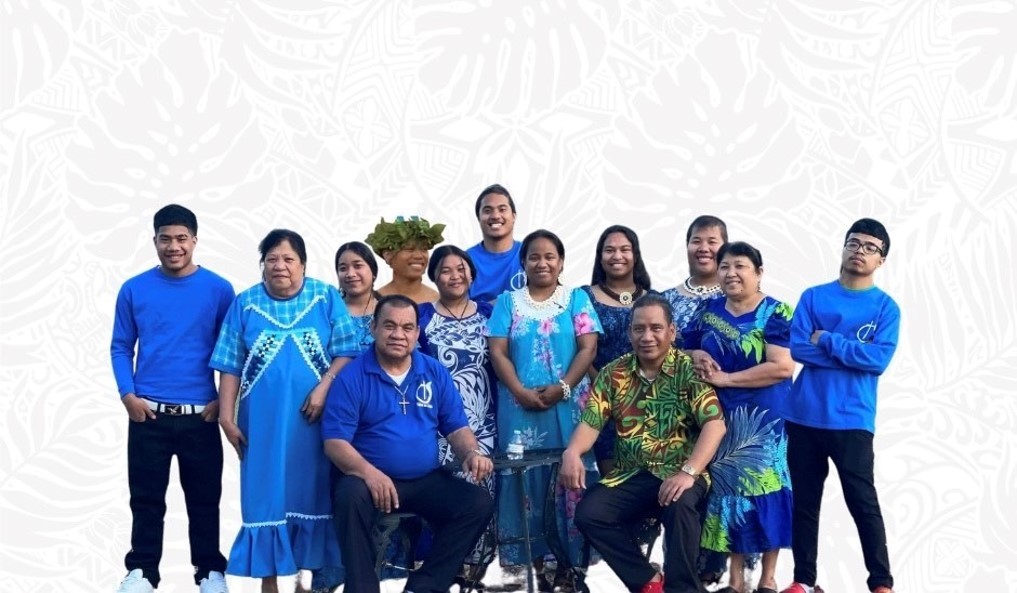
Learn more about cultural representation from Ralpho and mural artist Alan “Toxic” Rodriguez (click to expand story)
Marshallese culture is growing in the Ozarks, with more foods, a new Hawaiian restaurant, a Marshallese store and other shops, said Ralpho.
“Trust me, it has grown and it’s blending with different cultures now,” she said.
Yet generations-old traditions are still immersed in Marshallese culture and will be shared at the festival. The group is bringing a 14-foot traditional canoe — the only way to travel the islands — with a craftsman, Liton Beasa, who has built 52 canoes to date. Some members of the group will demonstrate traditional music and dance; others will demonstrate weaving traditional headpieces and jewelry using pandanus leaves from a native tropical tree.
Ralpho looks forward to sharing her community’s culture with national visitors.
“It’s very different and unique from other cultures. Knowing there’s a bunch of us out here in the Ozarks, I hope they learn that the Marshallese is unique and is something different than other Ozarks traditions out here in Arkansas.”
Fayetteville artist Alan “Toxic” Rodriguez will create a mural primarily using spray paint on the side of a 53-foot semi-trailer. The artist was six months old when his parents left Irapuato, Guanajuato, for the U.S. Once protected by the Deferred Action for Childhood Arrivals Act (DACAA), he’s been threatened with deportation to a place he’s never known.
Rodriguez started painting murals at age 17, about 10 years ago, and is best known for his passion pieces in Springdale and Rogers, most with imagery reflecting social issues — especially the challenges of Hispanic immigration.
“Our work reflects the thoughts and energies that the community themselves are wanting to see,” he said. “We try to pick imagery that will make people think and make people learn and want to go research and have those conversations about what’s going on in our world and in our community.”
That’s why he feels honored to be selected for the festival with his life and business partner, Kayleigh “ktana” Tolman.
“When people come to watch us, they’re going to see the process from start to finish,” said Tolman whose family has been in the Ozarks for generations. “We’re starting with a blank canvas and by the end of the festival — I don’t want to spoil what we’re drawing — but we hope to represent the Ozarks. Maybe a more unseen side the Ozarks and the unseen leaders of the Ozarks.”
Storytelling and music
Storytelling is a big part of traditional Ozarks life. Not only will the festival feature folklorist Marideth Sisco from West Plains, craft artists and musicians will share their stories through engagement and conversation.
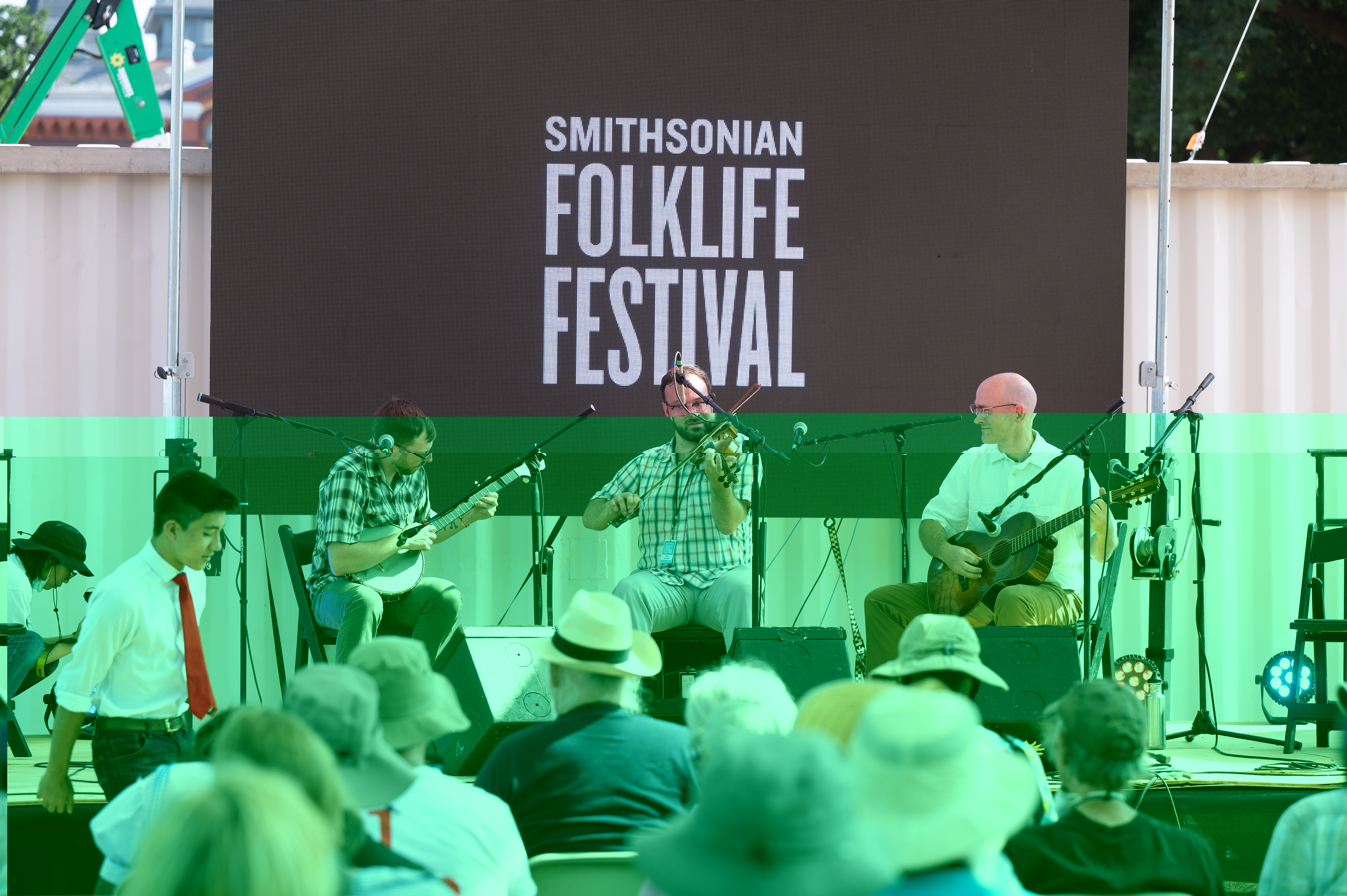
Learn more from Cory D. Perry and David Scrivner (click to expand story)
Perry looks forward to speaking with visitors while creating a tapestry (with help from Jacob Archer of Arkansas) by knitting and quilting, using textures and various pieces of imagery.
“What we're doing is thinking about the different stories and experiences that people have in the community. So we're thinking about our family members, we're talking about our friends. We're thinking about their celebrations, we're thinking about their struggles,” Perry explained. While crafting, “I'd like to share stories with people who will be coming to our area. Because that's a part of my research too. I research the folklore of black life and queer life,” they said. “And I'd like to share some of those stories while I'm out there.”
Music is one of the most unifying Ozarks traditions, incorporating the Stories, Sounds and Show Business theme, along with Celebrations and Gatherings, and Connections to Land and Place.
There will be evening concerts and musical events, including an opry-style variety show and square dancing. Participating musical groups include the Creek Rocks with Mark Bilyeu and Cindy Woolf; the Brockwell Gospel Music School from Arkansas; the Williams Family — a Black gospel group — plus many others.
Scrivner grew up in Ava, where making music was a family tradition, and started playing the fiddle in junior high. He began studying with renowned musician Bob Holt and, since then, Scrivner (now in his 40s) has become a regular who jams with other old-time folk musicians most Mondays in McClurg. At the Folklife Festival, he will perform with Nathan McAlister on banjo and David Cavins on guitar in the opry show, with square-dancing demonstrations and performances.
When Scrivner began playing in McClurg in the late 1990s, he was among the youngest musicians. These days, sometimes he’s the oldest in the room.
“Now there are some younger kids who are starting to come who are really good,” he said. “So Nathan and I especially have had talks about how we’re kind of the old guys now, and it feels really weird.”
But it also feels good, he says, because that means old-time music traditions will continue with younger generations.
Overall, McConnell hopes visitors embrace the festival as a place to learn more about the Ozarks they didn’t know, in a way they didn’t expect.
And while the festival may look different than what they may imagine, “I think people who may be more traditional observers might be surprised or, hopefully, have the chance to reconsider what it means to be longtime legacy Ozarkers,” she said. “The festival is an opportunity to redefine and help expand our understanding of what it means to be in the Ozarks.”


